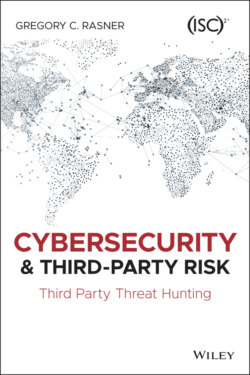Читать книгу Cybersecurity and Third-Party Risk - Gregory C. Rasner - Страница 25
Cybersecurity Basics for Third‐Party Risk
ОглавлениеSome terminology and a few foundational cybersecurity principles are required for a discussion on vendor risk management. Many of these concepts and components of cybersecurity are reviewed throughout this book. The reader isn't expected to be a cybersecurity expert; however, it's easier to grasp risk, priority, and actions if you have a basic understanding of them. You should keep the following bolded terms, which have simplified explanations, in mind.
Encryption is the process of taking plaintext, like a text message or email, and scrambling it into an unreadable format called cipher text. This text helps protect the confidentiality of data, either stored on computer systems or transmitted through a network like the internet. This capability is at the core of most discussions for securing data. There are subcategories in this area, such as synchronous and asynchronous encryption, but for this book, the discussions revolve mostly around the level of encryption. Advanced Encryption Standard (AES) is the type of encryption most often used by the U.S. government, among others. Most organizations typically leverage the AES‐128 or AES‐256 level of encryption for their enterprise. The trade‐off of higher encryption levels is speed—the higher the number, the more processing power it takes to decrypt—thus, the higher the number, the better.
Another area of encryption to focus on is the three states of encryption. Data consists of three states: at‐rest, in‐motion, and in‐use. At‐rest is as it sounds, meaning when the data is in a database or file. In‐motion refers to when data is traveling over a network or the internet. When a process is using the data, as in the CPU or memory, it is considered to be in‐use. In all three states, it is important to have the data encrypted. As you engage vendors on how they protect the data, ensure that your discussion involves all three states.
In recent years, a new mantra has been born: “Identity is the new perimeter.” This statement refers to how millions of people, especially after the rush to remote work during the COVID‐19 pandemic, are now connecting to work and school away from those places. Their identities, which are used to connect users to organizations, work, or school, and how that access is managed, which is known as access management, is very important when protecting the enterprise (and the data that resides internally at the vendor). It requires entities to focus on several areas for third‐party risk.
First, we cover the access process, which includes three steps: identity, authorization, and access. The identity phase is where a user types in their name and password and the system confirms their identity. Next, the authorization step confirms what access the user has—what that user is permitted to see and do. Lastly, the correct level of access is provided. Once these three steps are completed, the user is permitted to access the data and resources they have authorization to view.
The most common type of access in corporate environments, role‐based access (RBAC), includes predefined job roles with a specific set of access privileges. This implementation is demonstrated by the difference between two examples of types of roles. For example, a human resources (HR) manager will likely have access to payroll and personnel files. However, if they try to log in to a finance server, it will not permit them to connect because they do not have a role in the finance department. If the HR manager requires entry into that server, they must submit a business reason to the access management team for needing access to that server.
